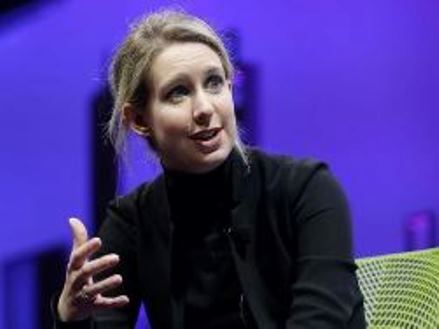How Elizabeth Holmes Abused Science to Deceive Investors
/Even in Silicon Valley, which is no stranger to hubris and deceit, it stands out – the bold-faced audacity of a young Stanford dropout, who bilked prominent investors out of hundreds of millions of dollars for a fictitious blood-testing technology based on finger-stick specimens.
Credit: Associated Press
Elizabeth Holmes, former CEO of now defunct Theranos, last year settled charges of massive financial fraud brought by the U.S. SEC (Securities and Exchange Commission), and now faces criminal charges in California for her multiple misdeeds. But beyond the harm done to duped investors, fired employees and patients misled about blood test results, Holmes’ duplicity and pathological lies only add to the abuse being heaped on science today.
One of the linchpins of the scientific method, a combination of observation and reason developed and refined for more than two thousand years, is the replication step. Observations that can’t be repeated, preferably by independent investigators, don’t qualify as scientific evidence. When the observations are blood tests on actual patients, repeatability and reliability are obviously paramount. Yet Theranos failed badly in both these areas.
Holmes created a compact testing device originally known as the Edison and later dubbed the minLab, supposedly capable of inexpensively diagnosing everything from diabetes to cancer. But within a year or two, questions began to emerge about just how good it was.
Several Theranos scientists protested in 2013 that the technology wasn’t ready for the market. Instead of repeatable results, the company’s new machine was generating inaccurate and even erroneous data for patients. Whistleblowers addressing a recent forum related how open falsification and cherry-picking of data were a regular part of everyday operations at Theranos. And technicians had to rerun tests if the results weren’t “acceptable” to management.
Much of this chicanery was exposed by Wall Street Journal investigative reporter John Carreyrou. In the wake of his sensational reporting, drugstore chain Walgreens announced in 2015 that it was suspending previous plans to establish blood testing facilities using Theranos technology in more than 40 stores across the U.S.
Among the horrors that Carreyrou documented in a later book were a Theranos test on a 16-year-old Arizona girl, whose faulty result showed a high level of potassium, meaning she could have been at risk of a heart attack. Tests on another Arizona woman suggested an impending stroke, for which she was unnecessarily rushed to a hospital emergency room. Hospital tests contradicted both sets of Theranos data. In January 2016, the Centers for Medicare and Medicaid Services, the oversight agency for blood-testing laboratories, declared that one of Theranos' labs posed "immediate jeopardy" to patients.
Closely allied to the repeatability required by the scientific method is transparency. Replication of a result isn’t possible unless the scientists who conducted the original experiment described their work openly and honestly – something that doesn’t always occur today. To be fair, there’s a need for a certain degree of secrecy in a commercial setting, in order to protect a company’s intellectual property. However, this need shouldn’t extend to internal operations of the company or to interactions between the very employees whose research is the basis of the company’s products.
But that’s exactly what happened at Theranos, where its scientists and technicians were kept in the dark about the purpose of their work and constantly shuffled from department to department. Physical barriers were erected in the research facility to prevent employees from actually seeing the lab-on-a-chip device, based on microfluidics and biochemistry, supposedly under development.
Only a handful of people knew that the much-vaunted technology was in fact a fake. In a 2014 article in Fortune magazine, Holmes claimed that Theranos already offered more than 200 blood tests and was ramping up to more than 1,000. The reality was that Theranos could only perform 12 of the 200-plus tests, all of one type, on its own equipment and had to use third-party analyzers to carry out all the other tests. Worse, Holmes allegedly knew that the miniLab had problems with accuracy and reliability, was slower than some competing devices and, in some ways, wasn’t competitive at all with more conventional blood-testing machines.
Investors were fooled too. Among the luminaries deceived by Holmes were former U.S. Secretaries of State Henry Kissinger and George Shultz, recently resigned Secretary of Defense and retired General James Mattis – all of whom became members of Theranos’ “all-star board” – and media tycoon Rupert Murdoch. Initial meetings with new investors were often followed by a rigged demonstration of the miniLab purporting to analyze their just-collected finger-stick samples.
Holmes not only fleeced her investors but also did a great disservice to science. The story will shortly be immortalized in a movie starring Jennifer Lawrence as Holmes.
Next: How the Scientific Consensus Can Be Wrong





